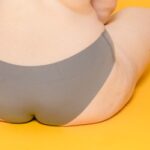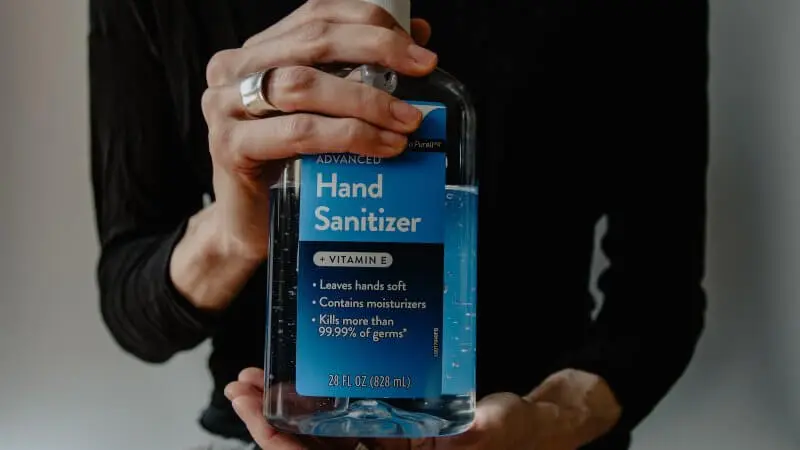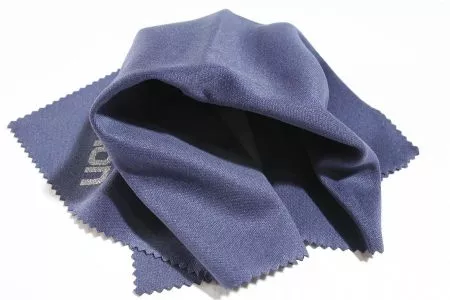Are you looking for a new bag or buying waterproof fabric to sew your bag? You are most likely wondering about the ideal waterproof fabric for your waterproof fabric. As a synthetic fabric, nylon is affordable and durable. But is a nylon bag waterproof?
A Nylon bag is not waterproof. Even if nylon is water-resistant, 100% nylon fabric is not waterproof. The individual fibers of nylon are waterproof. However, once the fibers have been woven into a fabric, water can pass through the nylon’s weave. To make a nylon bag 100% waterproof, the nylon fabric must be treated with special chemicals.
This article looks at what makes nylon water-resistant, what you can do to make nylon waterproof, and whether a nylon bag is waterproof. In addition, the article also discusses how nylon compares with other waterproof fabrics.
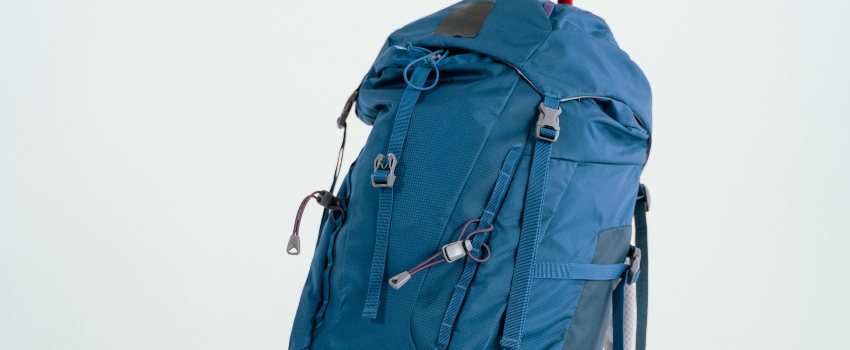
Waterproof And Water-Resistant Fabric
To determine whether a nylon bag is waterproof, it is essential first to understand what a waterproof fabric is and what water-resistant fabric is.
Waterproof Fabric
A waterproof fabric has to be able to withstand water. In other words, the fabric must be able to resist water penetrating through its fibers and wetting them. Except for a few fabrics such as Gore-Tex, most fabrics are not 100% waterproof.
To make fabrics waterproof, the fabrics are treated with specific sealants and coatings. However, by sealing the fabrics, the breathability value of the fabric drastically declines.
The type of nylon that a nylon bag is made from determines whether the bag is waterproof. For instance, if the nylon bag is made from nylon fabric that has been treated to make the fabric waterproof, then the bag will be waterproof. On the other hand, if the nylon bag is made from 100% nylon that has not been specially treated to make the fabric waterproof, the bag is not waterproof.
Water-Resistant Fabric
Many people consider the waterproof fabric and water-resistant fabric to be the same. However, even if the two terms might appear to imply the same, they are different from each other.
A water-resistant fabric repels water from the surface even though when water and pressure accumulate on the fabric’s surface; the water-resistant fabric will ultimately let water seep through.
For that reason, when you stay in the rain for a long time, a water-resistant jacket will eventually soak in water and get you wet. Thus, unless you have a 100% waterproof jacket, you should not expose yourself to the rain for long periods.
The same should be the case with a nylon bag. When the bag is exposed to heavy precipitation for an extended period, it will soak in water since nylon is water-resistant and not waterproof.
Is Nylon Fabric Waterproof?
100% nylon fabric is not entirely waterproof. Nevertheless, the fabric can be made waterproof by using different methods.
As a synthetic fabric, nylon is made from different chemicals. Some of the raw materials used in making nylon are petroleum, natural gas, limestone, coal, water, and acetylene.
Specifically, nylon is made from a condensation polymerization reaction. In the reaction, nylon fibers are made when difunctional monomers with amine and carboxylic acids in equal parts react.
To make nylon fabrics, the fibers produced from the reaction are woven. The tightly knitted weave of nylon fibers makes nylon fabric water-resistant. In addition, nylon fabric is coated with a special coating to make the fabric waterproof.
Does Nylon Absorb Water?
From a molecular perspective, nylon has hydrophilic amid groups that make it water-absorbent.
Even if nylon absorbs water, it absorbs it slower than other natural fabrics such as cotton and wool. The absorption rate of nylon is 10%, while natural fabrics have higher absorption rates.
If you left a piece of nylon fabric outside and it started to rain, the raindrops will only drop on the fabric’s surface and will not soak straight into the fabric. Nevertheless, if the rain intensifies, the increased pressure will find its way through the small gaps between nylon fibers in the weave.
If your bathroom has a shower curtain, the curtain is most probably made from nylon. The small droplets you see on the nylon shower curtain indicate that nylon does not absorb water easily. To remove the droplets, you can give your shower curtain a good shake, and you should be able to get the curtain dry in minutes.
Is Nylon Good For Rain?
Nylon is water-resistant. Thus, nylon is suitable to wear on a rainy day. In addition, nylon coats and jackets will keep you dry if you participate in various water activities such as fishing, canoeing, or kayaking.
Due to its water-resistant qualities, nylon is used by different fashion brands (Zara, Lululemon, and Patagonia) to make raincoats, winter coats, and even windbreakers.
As a plastic product, nylon is made to last a long time. However, the fact that nylon is not biodegradable implies that the fabric has a devastating impact on the environment since most used nylon clothes end up in landfills.
Is Nylon Bag Waterproof?
The nylon bag is water-resistant but not waterproof. This is because 100% nylon naturally absorbs water. Once the water has soaked nylon fabric, it seeps through the fabric and finds its way inside the nylon bag.
However, nylon is water-resistant. Thus, the nylon bag will initially resist water by repelling it from the bag’s surface. However, if the water and its pressure accumulate on the nylon surface, nylon fibers will eventually be unable to resist water.
Thus, while the nylon bag will resist light precipitation, water will seep through your nylon bag if you leave it outside during a thunderstorm. To make your nylon bah water-resistant, you can use different sprays to seal the gaps between the nylon threads.
How To Make Nylon Bag Or A Nylon Fabric Waterproof
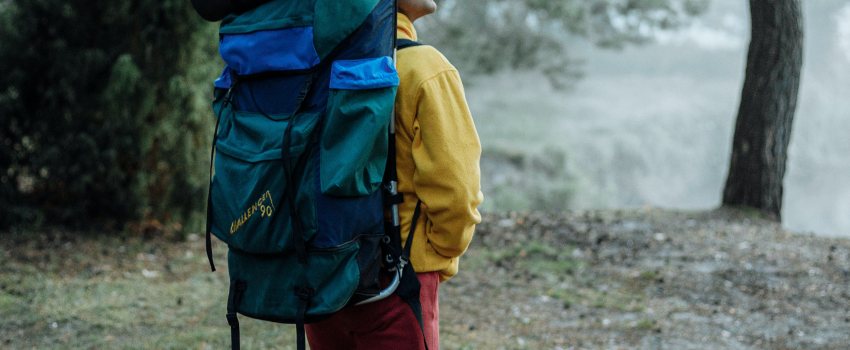
You can use two methods when you have a nylon bag or another nylon garment and want to make it waterproof. When you use any of the two methods, you will increase the tightness of the weave in the nylon fabric, and by doing that, you will add a coating to the nylon fabric, thus making it waterproof.
Denier
In fabrics, denier is used to establish the fiber thickness of every thread or filaments that have been used in making a piece of fabric. Usually, a high denier score implies that fabric is thick, durable, and sturdy. On the other hand, a low denier score count means that the fabric is light, soft, and silky.
40 D Nyon will be stronger than 15 D Nylon. This is because D implies denier, and as already mentioned, it is the unit used to measure the weight and thickness of individual threads in a fabric.
A high denier score also indicates that the threads are closely woven, implying minimal air gaps in the weave, thus limiting water from seeping through the fabric. Therefore, higher denier nylon will have high water resistance than lower denier nylon.
Once nylon has been woven, it is no longer possible to reduce the gaps between the fabric threads to make the fabric waterproof. Thus, layering the fabric with a few layers of nylon can make the fabric fully waterproof.
Coating
If you want to waterproof your nylon bag or nylon fabric completely, adding a protective coating or seal to nylon would be your best bet. Silnylon is an excellent example of nylon that has been coated with silicone on both sides to make the nylon 100% waterproof.
Thus, you can use a special silicone spray to waterproof your nylon bag, coat, or another nylon fabric. However, since different silicon sprays are meant to be sprayed on different fabrics to make them waterproof, it is critical to ensure the silicon spray you are using will work with nylon.
Scotchgard Water and Sun Shield
Scotchgard 5019-10UV-2PK Water & Sun UV Protector is one of the popular spray coatings. People have used the spray over the years to treat different outdoor gear and enhance the water repellant qualities of the different gears.
The spray is user-friendly. All you have to do is lightly spray it on a surface. The coating formed by the spray will protect the surface from water, UV rays, and even dirt.
Atsko Silicone Water-Guard 10.5 oz
This is another popular water repellent spray that you can spray in your nylon bag or garment to enhance its water-repellent qualities.
The spray is silicone-based and works fine with nylon fabrics. However, note that the spray can take a longer time to dry. But once it has dried, you can be assured that the coating improves the water-repellant ability of your nylon bag or garment.
Are Nylon Blends Waterproof?
Nylon is blended with other fabrics to address the cons of the fabrics and take advantage of the fabric’s strengths. Nylon blends are made by spinning nylon fibers with either natural or synthetic fibers so that the blended thread is then knitted into a nylon blend fabric.
NyCo or nylon cotton blend enhances the strengths, abrasion resistance, fast-drying quality, and wrinkle resistance of the fabrics. The work of cotton fibers in the blend is to offer high absorbency and soft feel value and therefore ensure that the blend is comfortable. The high absorbency of cotton thus implies that the nylon cotton blend cannot be water-resistant.
Nylon spandex blend ensures that the fabric can stretch up to 500% and return to its initial shape without losing its form. The high elasticity property in the blend is made possible by highly stretchy spandex fibers. The nylon-spandex blend is water-resistant but not 100% waterproof unless treated with waterproofing chemicals.
Conclusion
Nylon is water-resistant but not waterproof. However, if your bag is made from nylon that has been treated with chemicals to make it waterproof, then the bag is waterproof.
100% nylon bags are waterproof. Thus, you will be able to keep your nylon bag dry during light precipitation. However, when your nylon bag is exposed to heavy precipitation, the bag will not be soaked with water as nylon fibers cannot resist a lot of water.



